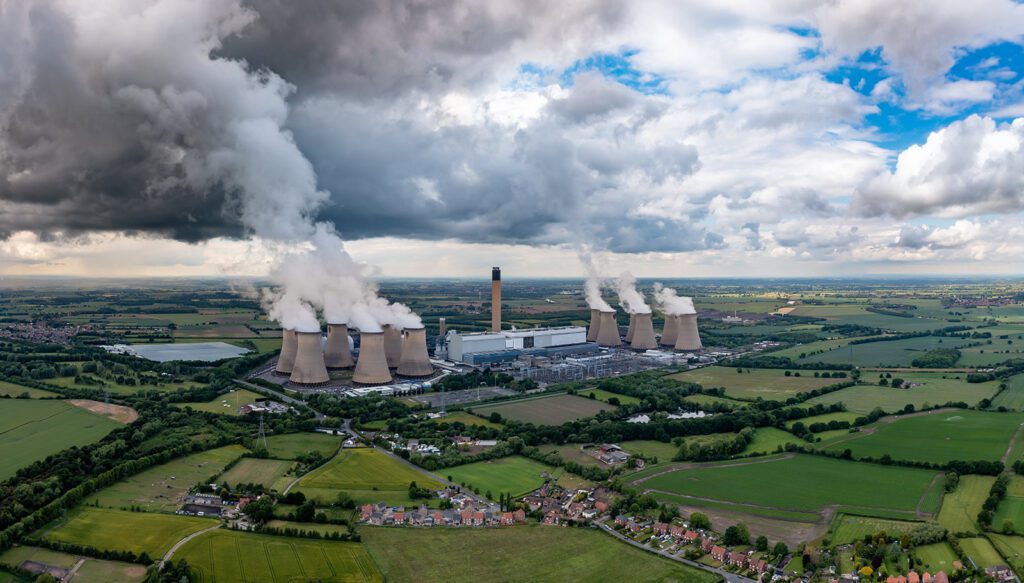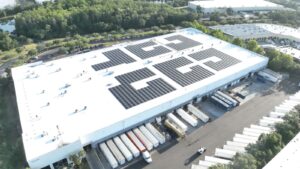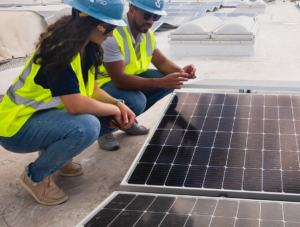To effectively combat global warming, achieving net zero greenhouse gas emissions is essential, the path is filled with complexities and challenges.
The term “net zero” refers to balancing the amount of emitted greenhouse gases with the amount removed from the atmosphere, essentially reducing the net emissions to zero.
This balance is crucial in halting the increase of global temperatures, a necessary step to reduce the worst impacts of climate change.
Decarbonization plays a pivotal role in the goal net zero.
It involves transitioning away from carbon-based energy sources, such as coal, oil, and natural gas, towards cleaner, renewable energy like solar, wind, and hydroelectric power.
This shift not only requires significant changes in the energy sector but also in transportation, industry, and agriculture, all major contributors to global greenhouse gas emissions.
The Burning of Fossil Fuels and Increased Carbon Dioxide in the Atmosphere
The burning of fossil fuels has increased carbon dioxide in the atmosphere, leading to global warming.
It’s recognize that reducing emissions quickly enough to meet climate goals is challenging.
This has brought attention to the concept of net zero emissions, where greenhouse gas emissions are balanced with removal methods, such as reforestation and carbon capture technologies, to effectively cancel out the impact of emissions.
Achieving net zero is crucial for minimizing the worst effects of climate change, requiring global cooperation across governments, businesses, and individuals.
Strategies include investing in renewable energy, transitioning to electric transport, and improving energy efficiency.
The move towards net zero also considers fairness, aiming to protect vulnerable communities from the unequal impacts of climate change and ensuring a sustainable future for all.
Net Zero and the Challenges of Greenhouse Gas Removals
Scientists recognize the challenge in reducing emissions quickly enough to align with climate goals.
This has led to a focus on achieving net zero, a state where the greenhouse gases we emit are balanced by the amount we remove from the atmosphere.
Achieving this balance is crucial for stabilizing global temperatures.
The toughest part of reaching net zero is removing emissions from the air.
Technologies like carbon capture and storage (CCS) and direct air capture (DAC) are key to this effort, but they face challenges such as high costs and scalability.
Natural solutions, such as planting trees and enhancing soil carbon absorption, also play a vital role but have their own limitations.
Moving towards net zero requires not just technological solutions but also significant changes in how we live and work.
This includes shifting to cleaner energy sources, improving energy efficiency, and adopting sustainable land use practices.
How Can We Better Understand Net Zero and Decarbonization?
According to the Economist, there are already methods already happening and being used for removing greenhouse gasses from the atmosphere.
These include the planting of new forests and improving soil, so that he can store more carbon.
Man made technologies are also being developed that will be able to take carbon dioxide from the air and store it in the ground.
There are many innovative ideas and inventions when it comes to negative-emissions technologies, but none of them have been proven to work.
When businesses say that they aim to be net zero, it means that they have a target of drastically reducing their greenhouse gas emissions.
They want to achieve a balance between the greenhouse gasses put into the atmosphere and those taken out. Net zero is considered the benchmark standard for decarbonization.
Greenhouse Gas Emissions Explained
Greenhouse gas emissions are gases like carbon dioxide, methane, and nitrous oxide that are released into the atmosphere by human activities such as burning fossil fuels, deforestation, and industrial processes.
These gases trap heat in the atmosphere and contribute to global warming and climate change.
It’s crucial that every aspect of a business is a part of the net zero transition.
Decarbonization cannot happen without the combination of both physical and digital technology to collect carbon data and act on it with certainty.
Are we on track to reach net zero by 2050?
No commitment from governments has not been met yet.
According to the United Nations Climate Programme, the global greenhouse emissions will grow by nearly 14% by 2023, from 2011 through 2025, compared to 2010.
To get to net zero it must be accompanied by significant changes in government nationally determined contributions to reduce greenhouse emissions now.
It’s becoming a new trend for companies to claim that they want to become net zero.
Although many companies do not want to own up to their carbon footprint, others are taking action.
According to Accenture, 35% of the world’s largest companies are now committed to Net Zero, however, all 93% will fail to achieve their goal if they do not double the pace of emissions reduction by 2030. It’s one thing to become net zero, but it’s another to become net zero and stay profitable.
That is the main concern for most corporations and they’re still trying to find a way to make both possible.

How Can Enterprises Combat Climate Change?
Adapting commercial solar to a business is a smart and effective way to address climate change while also delivering tangible benefits to your bottom line.
By investing in solar energy, businesses can significantly reduce their carbon footprint and greenhouse gas emissions, demonstrating their commitment to sustainability and environmental responsibility.
But beyond the environmental benefits, there are also clear economic advantages to investing in clean energy.
Solar energy systems can help to lower your energy costs, boost your company’s profitability, and increase your overall competitiveness in the marketplace.
In fact, many businesses are finding that investing in solar energy pays off in the form of lower utility bills and reduced operating expenses over time.
At the same time, by transitioning to solar energy, businesses can also position themselves as leaders in their industry and attract customers who are increasingly environmentally conscious and looking for sustainable products and services.
In this way, investing in commercial solar isn’t just great for the planet – it’s also great for your business.
Net Zero and Decarbonization FAQs
What is zero emission?
The goal of eliminating emissions is a process that removes carbon in the atmosphere in a process called carbon elimination.
What is the net zero carbon reduction strategy?
Net zero is the reduction of greenhouse gases to minus the emission from the atmosphere, oceans, forests, or the ocean.
Is decarbonization the same as net zero?
While decarbonizing the economy does not necessarily equate to the elimination of carbon emissions, it is also possible to reduce emissions with sequestration.











